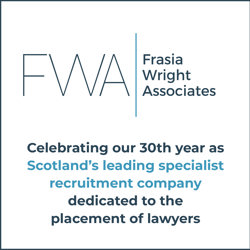How to transform an employment and earnings report from opinion to trusted tool

Katya Halsall explores how evidence-based employment reports earn their keep in court.
Setting the scene
When a court requests an expert witness report, there is an expectation: conclusions must be impartial, transparent and firmly rooted in evidence. Any opinion built on shaky ground – be it speculation or personal bias – will inevitably be scrutinised.
Employment and earnings reports are no exception. They should carry the same rigour as any other expert evidence placed before the court. If grounded in objectively assessed data, such reports can bridge the gap between the claimant’s and defendant’s perspectives about work capacity and earning potential. But if they rely too heavily on personal judgements, they will do little to assist the court in reaching a fair conclusion.
A credible employment report moves the case forward and doesn’t leave both sides stuck in an argument.
What experts are asked to do
Although every set of instructions varies, employment experts are generally asked to address two core issues:
- What would the claimant’s employment and earnings prospects have looked like had the accident or negligent event (the ‘index event’) not occurred?
- What are the claimant’s realistic prospects now?
Answering these questions requires different types of evidence and analysis.
Looking back: but for the index event
When examining pre-event prospects, the task should be relatively straightforward. The expert can rely on tangible records such as:
- academic qualifications and training certificates
- payslips, P60s and HMRC records
- employment contracts and job histories
With this evidence, it’s possible to project what might reasonably have been expected if the index event had not happened.
Looking forward: after the index event
The more complex task is to determine what the claimant can do now. Here, disagreement is common. Claimants may believe they can do little or no work; defendants may argue the opposite.
The role of the employment expert is not to take sides but to identify, through evidence, the types of work that remain functionally suitable and the realistic earnings attached to those roles. To do this effectively, the expert needs more than just a medical diagnosis – they need functional data.
Why a diagnosis isn’t enough
Take a back injury, for example: one person may return to light work with minimal restrictions; another with the same diagnosis may be left unable to tolerate sitting or standing for long periods. A diagnosis alone does not tell us how an individual actually functions. Two people with the same condition may display entirely different levels of function.
A diagnosis describes a condition; it doesn’t measure ability. That’s why a report based only on medical notes and/or diagnosis is not enough. The court needs more.
A functional approach
This is where a functional approach makes all the difference. By assessing the claimant’s actual abilities and limitations – what they can lift, how long they can sit, whether they can grip, bend, walk or stand – the expert can match those abilities against the demands of real jobs. This process provides clarity and adds a measurable dimension to a simple diagnosis.
Crucially, functional evidence does not dismiss medical input. Instead, it complements medical reports by translating clinical conditions into workplace realities. The focus shifts from ‘what the injury is’ to ‘what the person can still do’.
Case example
Take the example of ‘John’, a motorcyclist injured in a road accident two years ago, where he sustained fractures to his leg and arm.
Medical experts commented on the healing of the fractures and elements of residual pain, but this does not tell us what work functions John can now undertake, two years post-accident. Without more evidence, conclusions can vary:
- “He can’t manage manual work anymore.”
- “His fractures have fully healed, and he should already have returned to work.”
By contrast, functional testing allows us to observe (among other things) John’s grip strength, his ability to stand, walk, lift, and carry, and his tolerance for repetitive movements. With this data, we can identify suitable occupations and then research their earnings using official sources and live job adverts.
John’s vocational prognosis moves from assumption to evidence.
Why it matters
Every job requires a unique blend of abilities. Some roles are sedentary but demand fine dexterity. Others require lifting, carrying or bilateral use of the hands. Functional demands can vary even within the same occupation, depending on the employer.
A medical report doesn’t map those demands to an individual’s abilities, whereas a functional assessment does. It provides the missing link.
Medical vs employment evidence
Why commission an employment and earnings report when medical reports already exist?
Because medical experts focus on diagnosis, prognosis and causation. They rarely comment on employability. Suitably trained employment experts, on the other hand, translate medical outcomes into work outcomes: functionally suitable occupations, and earnings.
Without this, parties may overestimate or underestimate the claimant’s capacity for work, potentially fuelling disputes rather than resolving them.
Benefits for the court
From a judicial perspective, an employment report based on a functional approach adds value in three clear ways:
- Clarifying the claimant’s capacity for work – identifying what a claimant can realistically do.
- Identifying functionally suitable occupations – not just any job, but roles that are meaningful, sustainable and safe.
- Reliable earnings data for relevant occupations – using verifiable sources such as official statistics and current vacancies.
Together, these elements enable an employment expert to provide the court with a robust and evidence-based opinion on the claimant’s likely future employment and earnings trajectory.
Drawing it together
When employment experts rely on subjective opinions, the result is often disagreement, stalemate and reports that carry little weight.
By contrast, when reports are grounded in functional evidence, they can add real value to litigation.
The principle is simple: opinions should be demonstrably linked to evidence. A functional approach ensures that recommended occupations are not only possible in theory but achievable in practice – safe for the claimant, sustainable over time and reflective of the realities of the labour market.
In short, evidence is what transforms an employment and earnings report from an opinion into a tool the court can trust.
Katya Halsall is an employment expert and functional evaluator. She prepares evidence-based vocational reports for litigation and rehabilitation. Sine 2016, she has written Expert Employment and Earnings Reports for personal injury, medical negligence and family law matters.






